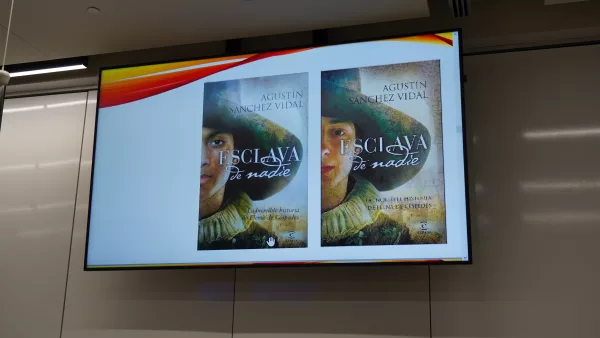The “De-Africanization of Spain” is a story of invisibility that was presented by Spanish historian Antumi Toasije at a conference on February 8 in the IE tower. In honor of Black History Month, Black history in Spain and the African diaspora were discussed. In this talk, some findings that Antumi has discovered during his research were shared. His research describes periods of racial and ethnic discrimination, as well as highlights infamous figures that played important roles in history.
What is “de-Africanization”?
The process that has been given the name “de-Africanization” refers to the denial of the relationship between Africa and Spain across centuries. Antumi explained that it also alludes to the avoiding of responsibility for slavery and colonial crimes of the past. After the defeat of Muslims in Granada in 1492, there has been a consistent effort to erase the African influence from the Iberian Peninsula and any footprints that may have been left behind.
After the defeat of King Boabdil on January 2, 1492, Granada was surrendered to the Spanish crown and just four years later all Muslims from the region were forced to convert to Christianity. Since then, the presence of Muslims has significantly decreased, thus lessening the African presence in the peninsula. These baptized Muslims were referred to as “Moriscos.”
According to Antumi, the Black population has some of the oldest roots in the Iberian Peninsula. He explained that one of these populations was the Moriscos who were ⅓ Black, ⅓ Semitic, and ⅓ of Black and Semitic ancestry. Furthermore, it has been confirmed by Chattanooga Chronicle News that the Moors did in fact rule Europe for almost 700 years. They were known for their influence on European culture, but not many people know that the Moors were actually Europeans of African descent. These people underwent a process of being “Arabized” or whitened by historians. Between 1609 and 1614, King Phillip III of Spain ordered the expulsion of all Moriscos for political and religious reasons.
In more recent history, in the Modern Period, the idea of “impurity of blood” surfaced. Antumi explained that the concept of the “impurity of blood” was religious, but also racial and racist. The idea was a symbol that God was not on the side of whoever was impure. The idea caused Moors, Jews, Blacks, “mulattoes”, Gypsies, and people of any other nonwhite origin to be excluded from positions in the public administration, the Catholic Church, universities, and the Army. This exclusion persisted until March 1870, when a decree suppressed all use of “blood purity” standards in determining eligibility for any government position or any licensed profession according to the “Colección Legislativa de España.”
A whitening of history
In order to further racism, there were even strategies to “whiten” descriptions, people, and images, that have been included in Spanish history books, in what is known as “La Historia Literaria de España.” Efforts to “whiten” images and people included: omissions of specific history chapters related to Africa, erasing the presence of Black history actors, changing the geographical origin of history actors and the subalternation, and changing roles between Blacks and whites. The original images in which important figures are supposed to be represented do not match the version seen in books today.

Photo by Gabriela Gorodi.
Black historical figures in Spanish history
In hopes of denouncing the continuous injustices done to Black individuals and communities in Spain, Antumi is spreading awareness about how these prejudices came to be. He highlights infamous figures that played a significant role in the course of Spanish history. One example he discussed was “Blackbird”, or Abu I-Hasan ‘Ali ibn Nafi’, who was born in 789 in Baghdad and was on the court of the Emir of Cordoba. He was alleged to be the most significant Moorish musician. The Moors introduced the earliest versions of several instruments, including the Lute or el oud, the guitar or kithara, and the Lyre. According to Antumi, the composition of the Spanish national anthem was written by Abu I-Hasan ‘Ali ibn Nafi’ and used in his musical pieces.
Antumi also explained that Cleopatra’s sister, Arsinoe, is claimed to have been Black but was erased from history. It has been discovered by scientists today that Cleopatra and Arsinoe were actually half-sisters, of the same Sub-Saharan African mother.
Today, there are approximately 1,300,000 Afro-Spaniard citizens in Spain, about 2.7% of the total population.
There are several groups today that strive to share knowledge about Black Spanish history and support the Black population that resides in Spain. A couple of these groups are KWANZAA (Afro Students Association) and Afroconciencia. Other websites where one can look for information on how to support Black populations in Spain and learn more about combatting racial discrimination are www.Afrofeminas.com and www.Africanidad.com.
Cover image by: Gabriela Gorodi







